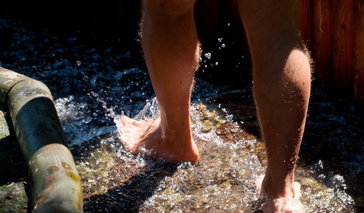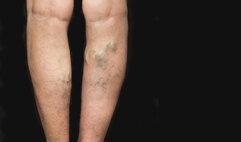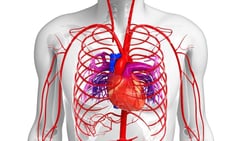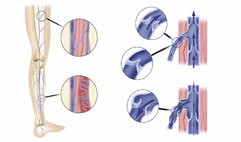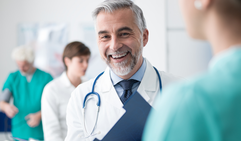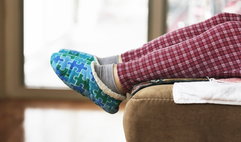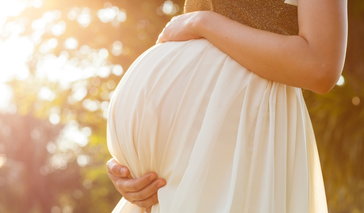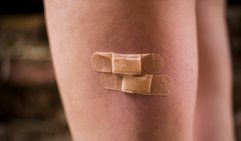Medical and cosmetic science has devised many tricks to make our skin look smoother, our complexion brighter and even to “fix” sagging parts of the body, all of which give a more youthful appearance. But bulging veins in the hands are one of the harder-to-hide signs of aging. If you have ...Continue Reading
Medical and cosmetic science has devised many tricks to make our skin look smoother, our complexion brighter and even to “fix” sagging parts of the body, all of which give a more youthful appearance. But bulging veins in the hands are one of the harder-to-hide signs of aging. If you have ...Continue Reading
Deep vein thrombosis (DVT) refers to the formation of blood clots in blood vessels deep within the body. Most cases occur within the vessels of the thighs or lower legs, but they can also occur in other parts of the body. Unlike more superficial clots, DVT clots can break away from the vessel walls ...Continue Reading
Deep vein thrombosis (DVT) refers to the formation of blood clots in blood vessels deep within the body. Most cases occur within the vessels of the thighs or lower legs, but they can also occur in other parts of the body. Unlike more superficial clots, DVT clots can break away from the vessel walls ...Continue Reading
Many people affected by varicose veins don’t notice any symptoms. However, some do experience pain, bulged veins, itching, and burning associated with the clogged veins in the legs. So how do you know if your varicose veins are getting worse, and what causes them to get worse? What Causes Vari ...Continue Reading
Many people affected by varicose veins don’t notice any symptoms. However, some do experience pain, bulged veins, itching, and burning associated with the clogged veins in the legs. So how do you know if your varicose veins are getting worse, and what causes them to get worse? What Causes Vari ...Continue Reading
The veins in your body play a very important role in your overall health. Veins return oxygenated blood from around your body back towards your heart. Arteries, often confused with veins, are responsible for carrying blood away from the heart to the rest of the body. When arteries are clogged or blo ...Continue Reading
The veins in your body play a very important role in your overall health. Veins return oxygenated blood from around your body back towards your heart. Arteries, often confused with veins, are responsible for carrying blood away from the heart to the rest of the body. When arteries are clogged or blo ...Continue Reading
Venous reflux refers to the abnormal backing up of blood in the veins. When blood flows backward in the veins, a person is then known to have venous insufficiency (also called chronic venous insufficiency or CVI for those for whom reflux is an ongoing concern). Venous insufficiency is a common medic ...Continue Reading
Venous reflux refers to the abnormal backing up of blood in the veins. When blood flows backward in the veins, a person is then known to have venous insufficiency (also called chronic venous insufficiency or CVI for those for whom reflux is an ongoing concern). Venous insufficiency is a common medic ...Continue Reading
A varicosity is a vein that is dilated, which usually develops in the legs. These abnormally enlarged, swollen veins are also commonly known as varicose veins. Doctors may interchangeably use the terms varicosity, varices, varicosis, or varicose vein. The vein’s job is to carry blood low in ox ...Continue Reading
A varicosity is a vein that is dilated, which usually develops in the legs. These abnormally enlarged, swollen veins are also commonly known as varicose veins. Doctors may interchangeably use the terms varicosity, varices, varicosis, or varicose vein. The vein’s job is to carry blood low in ox ...Continue Reading
Lymphedema (LE) is a swelling that occurs in one of your arms or legs. Although rare, it also can occur in both arms or both legs at the same time. It is a complicated process involving the lymphatic system. The lymphatic system circulates lymph fluid throughout the body to collect bacteria, viruses ...Continue Reading
Lymphedema (LE) is a swelling that occurs in one of your arms or legs. Although rare, it also can occur in both arms or both legs at the same time. It is a complicated process involving the lymphatic system. The lymphatic system circulates lymph fluid throughout the body to collect bacteria, viruses ...Continue Reading
If you are pregnant and have varicose veins, you are not alone. These swollen, twisted veins are a common occurrence during pregnancy. Sometimes they will go away by themselves after you give birth, but they can stick around much longer. Learn how pregnancy affects your vein health, how to reduce va ...Continue Reading
If you are pregnant and have varicose veins, you are not alone. These swollen, twisted veins are a common occurrence during pregnancy. Sometimes they will go away by themselves after you give birth, but they can stick around much longer. Learn how pregnancy affects your vein health, how to reduce va ...Continue Reading
Vein disease and peripheral artery disease (PAD) are two conditions that can cause poor circulation in the legs and feet. As a result of limited or abnormal blood flow, the limbs become deprived of oxygen and nutrients, causing the area to become inflamed and for open wounds to form (ulcers). What ...Continue Reading
Vein disease and peripheral artery disease (PAD) are two conditions that can cause poor circulation in the legs and feet. As a result of limited or abnormal blood flow, the limbs become deprived of oxygen and nutrients, causing the area to become inflamed and for open wounds to form (ulcers). What ...Continue Reading
Venous edema is chronic swelling often located in the legs, ankles or feet, and it can be a sign that you have underlying venous insufficiency (also known as vein disease), lymph node problems or a kidney condition. Edema associated with venous insufficiency is the most common type, affecting over 9 ...Continue Reading
Venous edema is chronic swelling often located in the legs, ankles or feet, and it can be a sign that you have underlying venous insufficiency (also known as vein disease), lymph node problems or a kidney condition. Edema associated with venous insufficiency is the most common type, affecting over 9 ...Continue Reading
All Article Categories
Suggested Doctors
Recently Asked Questions
Policies
Affiliations
Listen to our VeinMagazine Podcast here!




